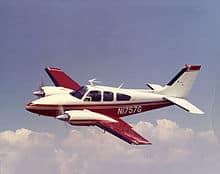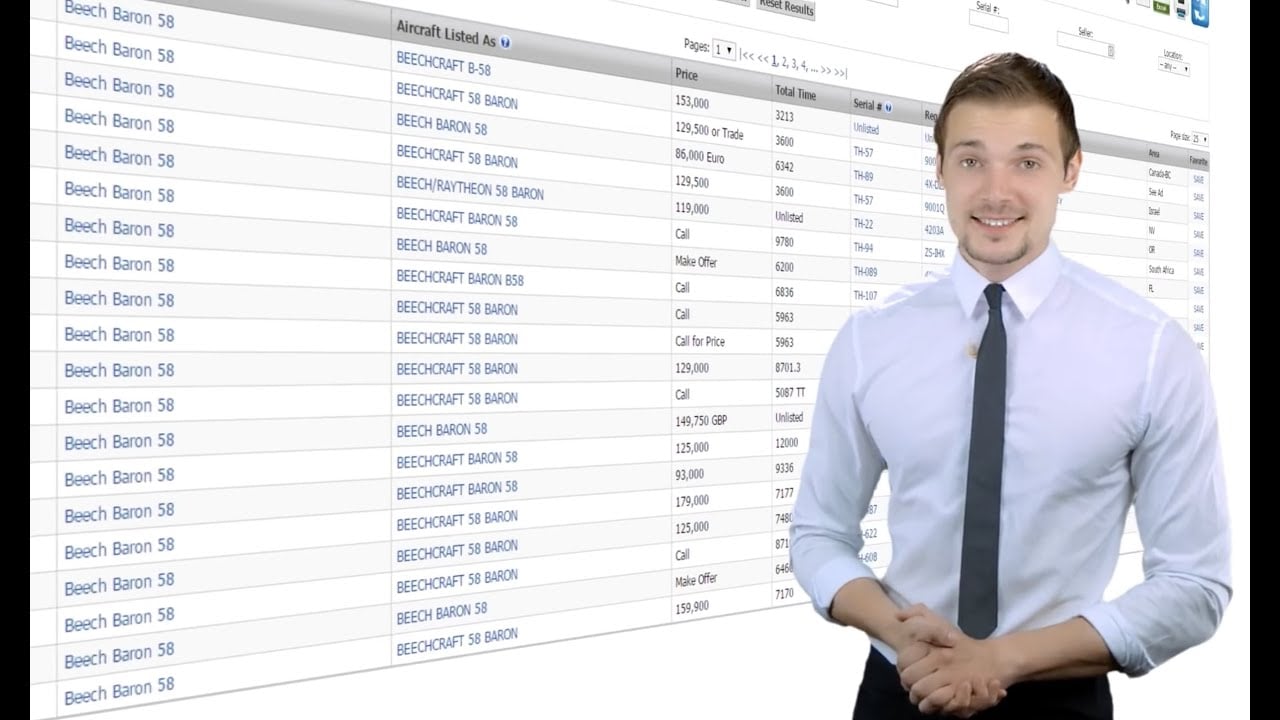
Beech Baron C55
The Beech C55 Baron was manufactured from 1966 to 1967, serial numbers TE1 through TE451and TC350, therefore, a total of 451 were built.
It is a twin-engine, piston aircraft configured as a cantilever low-wing aircraft with a conventional tail. Distinguishing features are: retractable landing gear, variable pitch propellers. Model C55 Baron seats up to 5 passengers and 1 pilot.
Specifications
Exterior Dimensions
Wing span: 37 ft 10 in
Length: 29 ft
Height: 9 ft 4 in (sn TC350, TE1-TE300)
Height: 9 ft 3 in (sn TE301-TE451)
Interior Dimensions
Cabin length: 11 ft 9 in
Max width: 3 ft 6 in
Max height: 4 ft 2 in
Baggage: 35 cu.ft.
Weights
Max TO weight: 5,300 lb
Empty Weight: 3,075 lbs
Maximum Payload: 2,285
Fuel capacity: 142 gallons standard
Engine
Manufacturer: Continental Motors
Model: IO-520C
Horsepower: 285 hp
Overhaul (HT): 1700hr TBO or 12 years
Standard Avionics
Digital Nav/Coms
3 axis autopilot
GS, DME, ADF
ADS-B In/Out
Performance
| Horsepower: 285.00 | Gross Weight: 5,300 |
| Top Speed: 210 | Empty Weight: 3,075 |
| Cruise Speed: 200 | Fuel Capacity: 112 |
| Stall Speed (dirty): 67 | Range: 550 |
| Rate of Climb: 1,670 | Rate of Climb (One Engine): 335 |
| Service Ceiling: 20,900 | Ceiling (One Engine): 7,100 |
| Takeoff | Landing |
| Ground Roll: 596 | Ground Roll 868 |
| Takeoff Roll Over 50 ft: 968 | Landing Roll Over 50 ft: 1,414 |
History
The Beech Baron C55, D55 and E55 (the “little Baron with the big engines”) models had an increased cruise speed of 200 knots (370 km/h) due to the 285 hp (213 kW) Continental IO520s. The gross weights of these later models increased to 5300 lb (2400 kg). They were about a foot (0.3 m) longer than the B55 Barons.
Big-engine Beech 55 Barons are easily identified by the air scoops atop the cowlings. The difference in length is less obvious, but it shows up when it comes time to load the airplane: The nose baggage compartment is larger, as is the cabin. Other differences included the level of standard equipment, and the availability of a 166-gallon fuel system on the big-engine version.
Built 1966 through 1967. Four to six seats. Powered by two, 285-hp Continental IO-520-C piston engines. Increased performance over the B55. Nose lengthened to accommodate more baggage, avionic equipment, and to improve weight and balance. Crack prone engine air intake box design changed. Alternators changed from belt driven to gear driven. 451 aircraft built. Priced at $68,350 in 1966.

